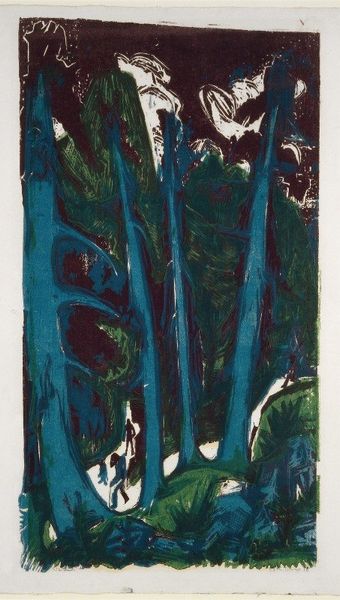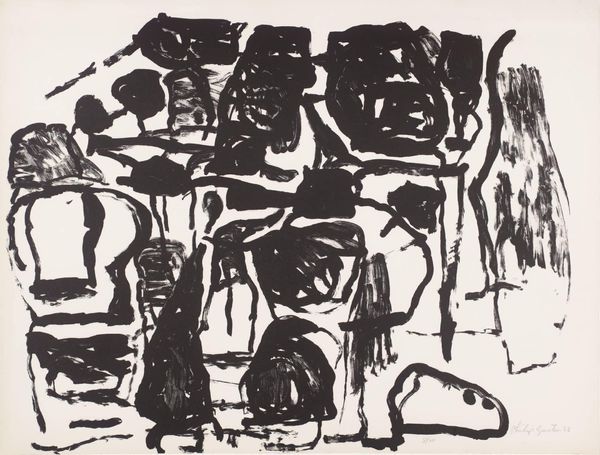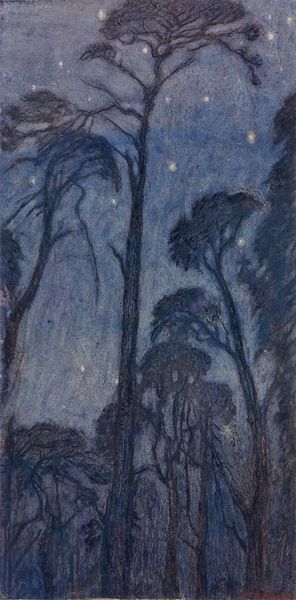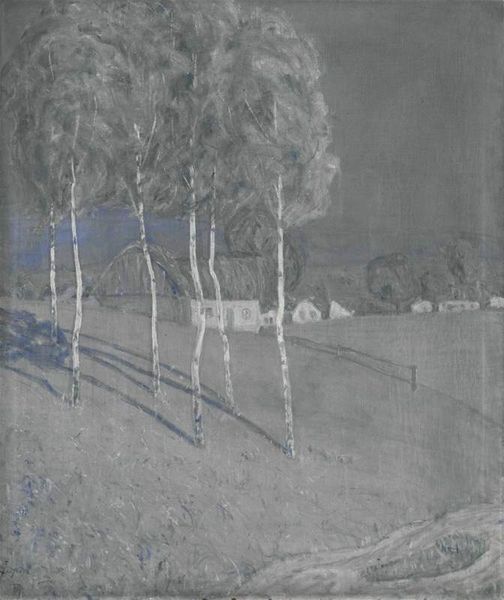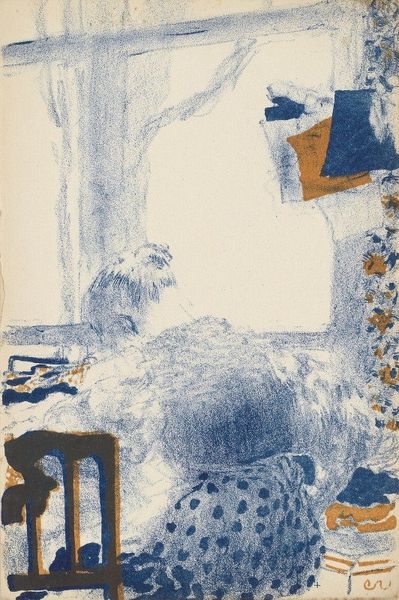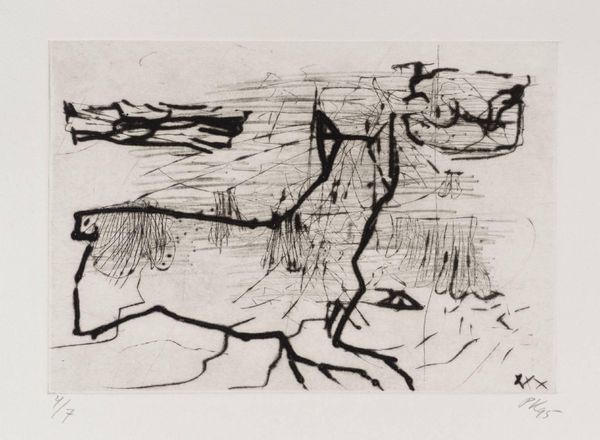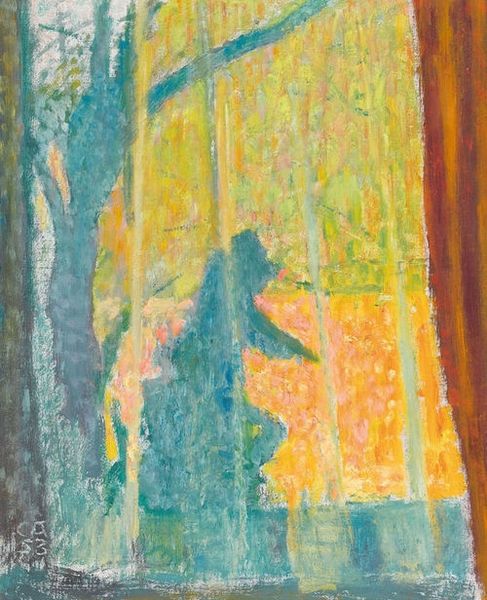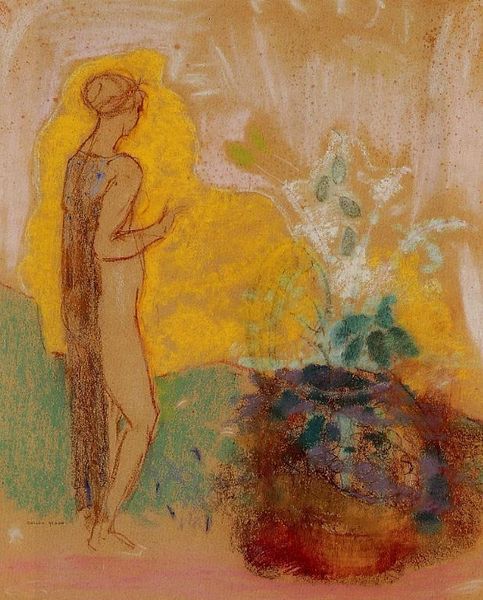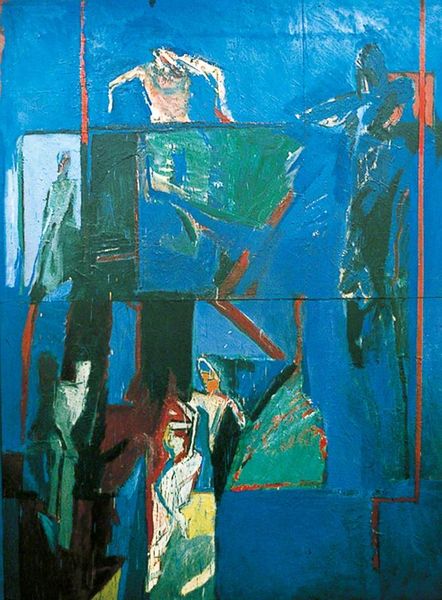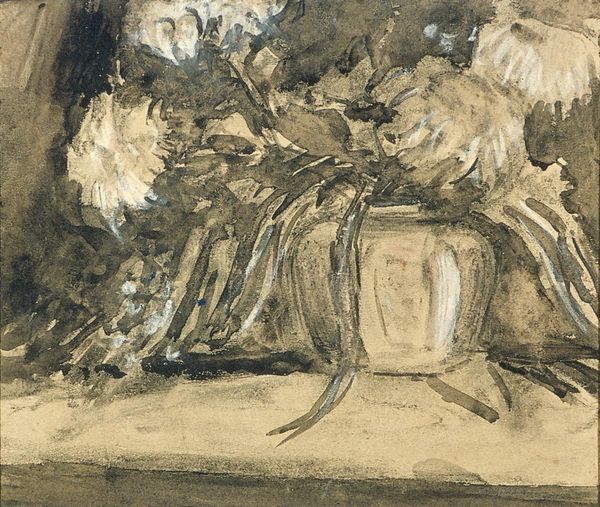
Copyright: Karl Knaths,Fair Use
Editor: Karl Knaths's "Frightened Deer in Moonlight," from 1932, painted in oil, certainly captures a sense of unease. The colours are muted, almost chilling, and the deer seem caught in a moment of extreme tension. What do you see in this piece, particularly considering the time it was made? Curator: Well, it's crucial to understand that Knaths, though deeply engaged with European modernism, was very much working in an American context during the interwar period. This painting, to me, speaks to anxieties prevalent during the Depression era. The "frightened" deer, rendered in such an abstract, almost brutal style, can be read as a symbol for vulnerability and precarity experienced widely during that period. Consider how the limited palette contributes to a sense of bleakness. Do you notice how the landscape almost seems to be closing in on the animals? Editor: Yes, definitely. The stark vertical lines on the left, and the way the hillside presses down… it feels very claustrophobic, not at all like the open, free landscapes you might expect with deer. Curator: Precisely. And what about the moon? Note how it isn't a comforting source of light but a rather cold, detached presence. Knaths, influenced by movements like Expressionism, uses abstraction not just for formal reasons but to convey emotional and psychological states. So, rather than depicting deer in a landscape, he is using the image to explore themes of fear, instability, and perhaps even societal breakdown. He challenges conventional notions of the American pastoral idyll. Editor: So, it’s less about nature and more about society reflected *through* nature? I hadn't considered that so directly. Curator: Exactly. It pushes us to see beyond the surface imagery and consider the social commentary embedded within. I find it fascinating how artists use symbolic forms during such tumultuous times to respond to the events happening around them. Editor: This was truly enlightening. I'll never see a landscape painting the same way. Thanks! Curator: My pleasure. There is always more to learn.
Comments
No comments
Be the first to comment and join the conversation on the ultimate creative platform.
